The Immortal King, Ravana
The Immortal King, Ravana
Dr. Senarath Tennakoon |
| Source: http://www.ravana.info |
Dr. Mirando Obeysekera has been deeply engrossed in a research study on King Ravana. His publication ‘The Cultural Heritage of King Ravana’ was published in English. He has written a series of articles on King Rawana to Sri Lankadeepa and these articles have been published as a book titled ‘The Immortal King Ravana’ (Ravana amaraneyai).
Dr Mirando Obeysekera employs a mixed approach in his research methodology. There is a combination of anthropology and ethnography. The sources of information are both primary and secondary. Evidence has been based on historical records, inscriptions, symbolic representations, folklore, epics and scholerly studies. A wealth of resourceful information has been gathered by his explorative visits to places of interest and by way of disourses with the natives and the scholars.
There are two objectives for publishing this book. The first is to discover the character, and reveal significant life events of King Ravana. The second is to convince the reader that Ravana concept is not a myth.
Great physician
 |
| Source: http://www.ravana.info |
He has composed Ayurvedic books of which Arkappgkasa is well known. The auspicious Time Scale (Ravana Horava) is a creation of King Ravana that foregrounds his knowledge in astronomy/astrology. Ravana Haththa, the oldest violin has been one of his creations. The Ravana Flag has a figure of a crowned king holding an arrow in the right hand and a bow in the left hand. Dr. Mirando observes the positive features of similarity between God Skanda and King Ravana, and ascribes the Peacock vehicle used by God Skanda to the flying vehicle Dadumonara owned by King Ravana.
Reference if made to Alakamanda, the palace of King Kuvera which is symbolically represented by the famous rock fortress Sigiriya. King Ravana after defeating King Kuvera in combat used Sigiriya as one of his palaces. Sigiriya belongs to the prehistoric megalith era. There is a folk poem revealing the intimate relationship between King Ravana and Sigiriya.
Two chapters (7 and 8) are devoted to King Ravana’s rock Fortress Sigiriya. King Ravana’s consort was Mandodari and the paintings on the mirror wall depict her. Her father Mayadanavaya was the architect of Sigiriya. There is a cave in Sigiriya.
‘The Cobra – Head Cave (naipena guhava/Naguliya lena) where Princess Sita had been under Ravana’s protection. Dr. Mirando has come to the inference that an underground way exists beneath Sigiriya rock. In chapter nine (9) the ruins of an anciant Yaksha Kingdom of YaPavva (Yapahuva) has been touched upon, where he describes the ruins of stone statue of King Ravana and the stone figures of Lupus Wolves. The latter have been misidentified as figures of Lions.
Ravana and Rama
There are three chapters devoted to the historical significance of the Knuckles Hilly Region. The great spic Ramayana has deictic and referential expressions about his enchanting hilly region and there is a specific description of the great war between Ravana and Rama. King Ravana had his palace on the side of Lakegala in Lakgala. There are inhabitants carrying the Brahamana lineage in this region. Hinigama was inhabited by the Yaksha clan. Ravanagama is a forest area of 2600 acres of fertile land.There existed a palace at Lakegala. Now this place is known as Maligatanna. King Ravana’s vast kingdom extended to cover Sigiriya. There are location names such as Ravanagoda, Seeta Eliya, Variyapola (Airport), Maraka (where King Ravana expired) Ravana Kanda so forth that are connected with the history of King Ravana. Lankawatara Sutra mentions about Ratnagiri which is Lakgala observes Dr. Mirando.
The Sita Gallena at Lakgala is another stone cave where queen Sita was kept under Ravana’s protection. The historic grave yard at Ibbankatuva has been the chief burial ground during Ravana’s time. Ravana’s pedigree has been ascertained. King Ravana’s consort was Mandodari.
The controversial statues of Isurumuniya lovers are the parents of King Ravana and the stone statue at Pollonnaruva is that of Pulasti muni, Ravana’s grandfather.
The last chapter (14) describes the Sun God Festival which reminds of the present day New Year festival. King Ravana actively participated in the sports events at Yak Vila, his mother’s birth place, where he defeated a drunken elephant. The elephant after defeat had hidden at a place called Aetkadure in Ambalangoda. The richness, diversity and complexity of the theme cannot be compressed into the pages of a slim volume such as this publication. It is exciting to note that Dr. Mirando has initiated an insightful search on a lost tradition and culture. The present work has no pretensions to being an exhaustive reference source. Expert collaborative research culminating in an international conference world be most welcome.
Reference:
http://www.dailynews.lk/2017/05/23/features/116687/immortal-king-ravana





I am deeply interested in this subject, for some it may appear to be mythology but it needs to be understood as to how this idea of an aircraft and also names of related to VIMAN sprang up in Srilanka. There has to be something more to it than it meets the eye. This aspect was also covered in the programme ; ANCIENT ALIENS in Discovery Science. If you can send me your mail ID, It would be great. I will be able to clarify queries in my mind.
ReplyDelete